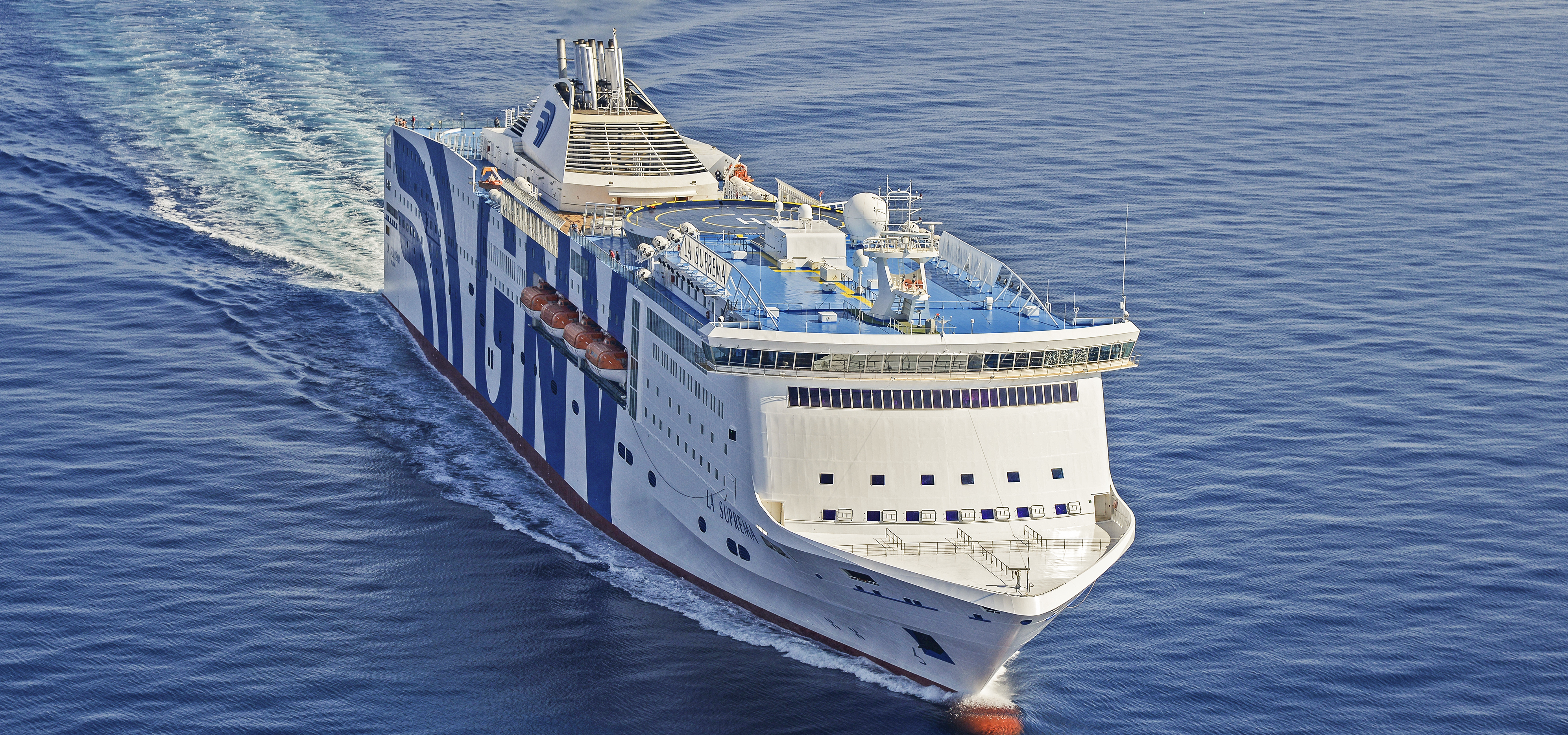GNV has always been an innovator, with our iconic “white ships” transporting thousands of passengers in style between destinations in Italy, France, Morocco, Tunisia and Albania. A surge in volume and turnover over the last two years has paved the way for a further expansion of the company’s fleet and network of routes.
One important area of innovation is ship design. We look forward to the delivery of two new 2,500-passenger luxury cruise ferries currently under construction at Guangzhou Shipyard International Co. They are highly innovative in many ways. Firstly, the new ships will comply with all European and international environmental legislation. The hull has been designed and tested to minimise consumption while maintaining performance at high speeds. Both ferries will also be equipped with advanced exhaust cleaning systems.
Considering that with 3,500 linear metres they have twice the capacity of the biggest ro-pax ferry vessels currently operating in the Mediterranean, energy consumption per unit carried will be roughly halved. In terms of the passenger experience, they will meet RINA Comfort class standards while operating at the maximum service speed, guaranteeing our customers a reliable, comfortable and modern journey.
The new ferries can be converted to run on LNG if and when this solution becomes viable. It is clear that LNG can be suitable for use as a low-carbon means of propulsion in compliance with IMO environmental regulations. However, before LNG can be adopted on a wide scale in the Mediterranean, much work still needs to be done to develop the necessary infrastructure and ensure reliable distribution, as well as define appropriate rules and standards.

GNV strongly supports the agreement recently signed by Italian shipowners’ associations (Confitarma e AssArmatori) and representatives of the gas sector (Assogasliquidi/Federchimica and Assocostieri) to address the infrastructure and regulatory issues around the use of LNG in port areas. By working together, we will hopefully be able to overcome the obstacles currently preventing the adoption of LNG as a fuel for ferries.
Even without LNG, however, ferries already provide tangible environmental benefits. Intermodal passenger transport based on ro-pax connections can reduce emissions compared to full road transportation by between 50% and 90%, depending on the load factor. Moreover, shipping trucks by ferry not only leads to a lower environmental impact, it also reduces road congestion.
Innovation is not something we can do alone. From the very beginning, we have always been in contact with classification societies. As well as guaranteeing the application of international standards, they offer access to professionals able to support us in developing our fleet. For example, during the last five years we have successfully replaced our propulsion control system with a new-generation system, updating it with a modern digital control unit. Old cables have been replaced with optical fibre for faster and more reliable communication.
In 2015, we also replaced the propeller blades of our 2,920-passenger ferry La Superba, improving its propulsive efficiency. By comparing performance assessment data we highlighted a fuel saving of around 10% with a speed range between 22 and 24 knots. We have also invested in switching to LED lights on board. Replacing more than 70,000 lights has reduced energy consumption by 70% on average and contributed to a considerable reduction in CO2 emissions. Moreover, the LED lights are guaranteed for 50,000 hours, with low maintenance costs and less waste compared to traditional bulbs.
RINA has been the surveyor for every GNV newbuilding and will also survey our next-generation vessels. RINA’s knowledge and competence in the marine industry have made them one of our major partners in the last 25 years. Together with RINA, we constantly investigate new solutions to reduce our environmental footprint. Through our joint efforts, we are proud to have earned the prestigious Green Star award for sustainability standards that surpass mandatory norms – for every newbuilding since 1993. Beside the development of new vessels, we work with RINA to identify technologies that will help us improve our performance while further reducing consumption.
We also use RINA’s InfoSHIP EGO system to measure the propulsion performance of our fleet. Every ferry is constantly monitored, with real-time analysis of the data allowing us to fine-tune navigation settings to reduce fuel consumption and maintain the lowest possible environmental impact. We have recently chosen RINA as a strategic partner and solutions provider to implement an Asset Management System. This will help us to plan technical maintenance interventions to achieve greater performance targets for speed, consumption and comfort during sailing.
With the support of RINA, we are always innovating for sustainability – and of course, for our customers.